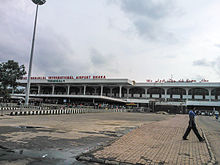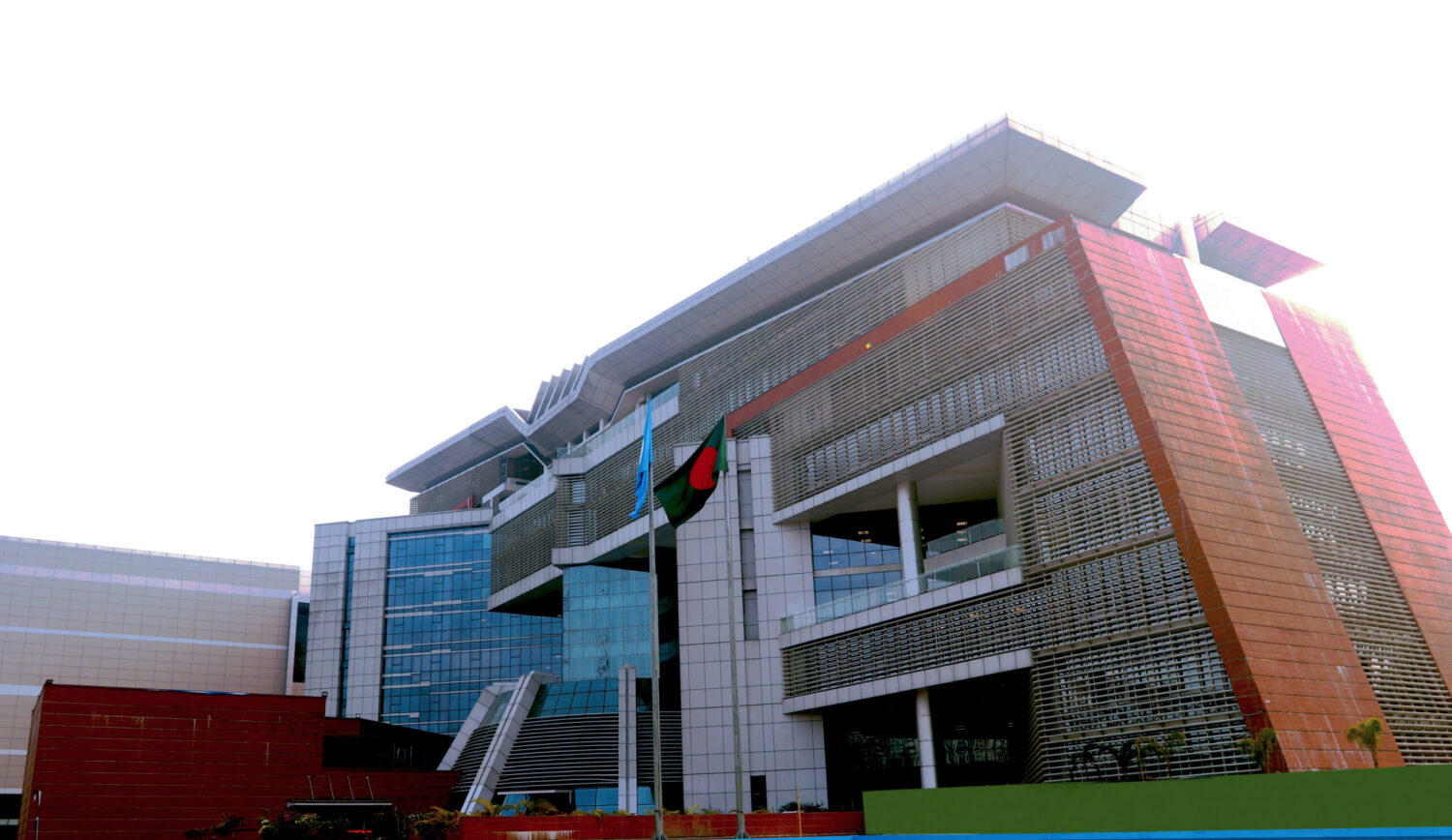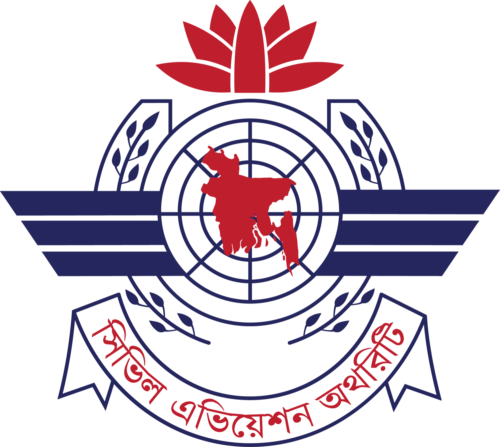The Civil Aviation Authority of Bangladesh is the regulatory body for all aviation-related activities in Bangladesh, operating under the Ministry of Civil Aviation & Tourism. It oversees the nine operational airports in the country and plays a crucial role in ensuring the safety and efficiency of the aviation industry.
With its headquarters in Dhaka, the authority is responsible for enforcing regulations, issuing licenses, and managing air traffic control. As a government agency, the Civil Aviation Authority of Bangladesh plays a vital role in promoting and facilitating the growth of the aviation sector in the country, while also ensuring the highest standards of safety and security.
The Foundation Of Civil Aviation Authority Of Bangladesh
The Foundation of Civil Aviation Authority of Bangladesh
The Inception And Evolution
Civil Aviation Authority of Bangladesh (CAAB) was established in 1985 as a regulatory body for all aviation-related activities in the country. It operates under the Ministry of Civil Aviation & Tourism, playing a pivotal role in ensuring the safety and security of air travel within Bangladesh.
Key Milestones And Achievements
Over the years, CAAB has achieved significant milestones, including the modernization and expansion of airport infrastructure, implementation of advanced aviation technologies, and compliance with international aviation standards. These achievements have positioned CAAB as a key player in the region’s aviation sector, contributing to the country’s economic development and global connectivity.

Credit: en.wikipedia.org
Under The Ministry’s Wings
The Civil Aviation Authority of Bangladesh (CAAB) operates under the Ministry of Civil Aviation & Tourism, playing a crucial role in the regulation and oversight of aviation activities across the country. Let’s delve into the responsibilities and the oversight provided by the Ministry of Civil Aviation & Tourism.
Role And Responsibilities
The CAAB functions as the regulatory body for all aviation-related activities in Bangladesh. It is responsible for ensuring the safety, security, and efficiency of civil aviation operations, including the management of airspace, licensing of aviation personnel, and oversight of airport infrastructure.
Ministry Of Civil Aviation & Tourism’s Oversight
Operating under the Ministry of Civil Aviation & Tourism, the CAAB receives strategic guidance and direction to effectively regulate and develop the aviation sector. The Ministry’s oversight ensures alignment with national policies and international standards, facilitating the growth and sustainability of the aviation industry in Bangladesh.
Navigating Through Leadership
The Civil Aviation Authority of Bangladesh (CAAB) serves as the regulatory body for all aviation-related activities in the country. Operating under the Ministry of Civil Aviation & Tourism, it oversees the functioning of all nine operational airports in Bangladesh. Led by Air Commodore Sadikur Rahman Chowdhury, the CAAB plays a crucial role in ensuring safe and efficient civil aviation operations.
Navigating Through Leadership: Current Leadership Structure The Civil Aviation Authority of Bangladesh (CAAB) is the regulatory body responsible for all aviation-related activities in Bangladesh. Under the Ministry of Civil Aviation and Tourism, the CAAB has a well-structured leadership team that oversees the operations of nine airports across the country. Profiles: From CEO to Chairman At the helm of the CAAB is the Chairman, Air Commodore Sadikur Rahman Chowdhury. With over 30 years of experience in the Bangladesh Air Force, he has been leading the CAAB since 2018. As the top executive, he is responsible for formulating policies, strategies, and plans for the aviation industry. Assisting the Chairman is the Director-General, Md. Mafidur Rahman. He is responsible for ensuring the effective implementation of policies and programs set by the CAAB. He also oversees the day-to-day operations of the organization, ensuring that they align with the vision of the Chairman. Another crucial member of the CAAB’s leadership team is the Member (Operations and Planning), Air Commodore M Mafidur Rahman. He is responsible for all operational and planning activities of the CAAB, including air traffic control, airport operations, and aviation security. The CAAB also has a Member (Finance and Administration), who oversees all financial and administrative activities of the organization. Currently, the position is held by Mr. Md. Abdul Mannan. In conclusion, the CAAB’s leadership team is well-structured to navigate through the aviation industry’s challenges effectively. With experienced professionals at the helm, the CAAB is well-positioned to continue its role as the regulatory body for all aviation-related activities in Bangladesh.A Fleet Of Airports
The Civil Aviation Authority of Bangladesh serves as the regulatory body for all aviation activities in the country, operating under the Ministry of Civil Aviation & Tourism. It oversees nine operational airports, playing a crucial role in the management and regulation of civil aviation affairs in Bangladesh.
Overview Of Operational Airports
The Civil Aviation Authority of Bangladesh (CAAB) is responsible for overseeing all aviation-related activities in Bangladesh. Under the Ministry of Civil Aviation and Tourism, the CAAB functions as the regulatory body for civil aviation affairs. One of its key responsibilities is managing and operating the nine operational airports in the country.
These airports play a crucial role in facilitating domestic and international air travel, connecting Bangladesh to the rest of the world. Each airport has its own unique features and serves different purposes, ensuring efficient and safe transportation for both passengers and cargo.
International Vs. Domestic Distinctions
When it comes to airport operations, the CAAB distinguishes between international and domestic airports. International airports are equipped with the necessary infrastructure and facilities to handle international flights, while domestic airports primarily cater to domestic air travel.
The international airports in Bangladesh, such as Shahjalal International Airport in Dhaka and Shah Amanat International Airport in Chattogram, handle a significant volume of international passenger traffic. These airports are equipped with customs and immigration facilities, allowing for seamless international travel.
On the other hand, domestic airports like Cox’s Bazar Airport and Jessore Airport mainly serve domestic flights within Bangladesh. These airports ensure convenient access to different regions of the country, promoting tourism, business, and economic development.
Overall, the CAAB’s management and oversight of both international and domestic airports contribute to the growth and development of Bangladesh’s aviation sector, fostering connectivity and facilitating travel and trade.
Regulating The Skies
The Civil Aviation Authority of Bangladesh serves as the regulatory body for all aviation-related activities in the country, operating under the Ministry of Civil Aviation & Tourism. With nine operational airports under its jurisdiction, CAAB plays a critical role in overseeing and managing Bangladesh’s aviation sector.
Regulating the Skies: CAAB’s Regulatory Functions The Civil Aviation Authority of Bangladesh (CAAB) is the regulatory body responsible for all aviation-related activities in Bangladesh. The CAAB is a government office under the Ministry of Civil Aviation and Tourism and operates under the Bangladesh Civil Aviation Authority Act, 2017. The primary function of the CAAB is to ensure the safety and security of air travel in Bangladesh by regulating airlines, airports, and air traffic. CAAB’s regulatory functions The CAAB has several regulatory functions that it carries out to ensure the safety and security of the aviation industry in Bangladesh. These functions include: 1. Issuing and renewing licenses: The CAAB issues and renews licenses for airlines, airports, pilots, and air traffic controllers. These licenses are granted based on strict safety and security standards. 2. Monitoring aviation safety: The CAAB monitors airlines, airports, and air traffic controllers to ensure they comply with safety regulations. It conducts regular inspections and audits to ensure that all safety procedures are being followed. 3. Investigating accidents and incidents: The CAAB investigates all accidents and incidents that occur within the aviation industry in Bangladesh. It conducts thorough investigations to determine the cause of the accident or incident and takes appropriate action to prevent a recurrence. 4. Enforcing regulations: The CAAB enforces regulations related to aviation safety, security, and environmental protection. It takes action against individuals or organizations that violate these regulations. Impact on Bangladesh aviation The CAAB’s regulatory functions have had a significant impact on the aviation industry in Bangladesh. It has helped to improve the safety and security of air travel in the country, which has led to an increase in the number of people using air transport. The CAAB’s regulatory oversight has also helped to attract foreign airlines to operate in Bangladesh, which has further boosted the country’s aviation sector. In conclusion, the Civil Aviation Authority of Bangladesh plays a critical role in regulating the skies in Bangladesh. Its regulatory functions ensure the safety and security of air travel in the country, which has led to an increase in the number of people using air transport. The CAAB’s efforts have helped to improve the aviation industry in Bangladesh and attract foreign airlines to operate in the country.Training And Development
The Civil Aviation Authority of Bangladesh serves as the regulatory body for all aviation activities in Bangladesh, operating under the Ministry of Civil Aviation & Tourism. It oversees the nine operational airports in the country and ensures compliance with aviation regulations.
Training and Development is a crucial part of any aviation authority, and the Civil Aviation Authority of Bangladesh (CAAB) is no exception. With a mission to ensure safe and efficient air transportation, CAAB provides various training and development programs to its employees and stakeholders. Here are some of the aviation training institutes under CAAB:Aviation Training Institutes Under Caab
- Aviation Training Center (ATC)
- Bangladesh Flying Academy (BFA)
- Aeronautical Institute of Bangladesh (AIB)
Programs And Certifications
- Pilot Training
- Aircraft Maintenance Engineering
- Air Traffic Control
- Aeronautical Telecommunication Engineering
- Airport Operations Management
Safety And Standards
The Civil Aviation Authority of Bangladesh is the regulatory body overseeing all aviation activities in the country. As the government office responsible for maintaining safety and standards, it operates under the Ministry of Civil Aviation & Tourism and manages all operational airports in Bangladesh.
Safety Protocols And Measures
Ensuring the safety of passengers and maintaining high standards is a top priority for the Civil Aviation Authority of Bangladesh (CAAB). The CAAB has implemented various safety protocols and measures to ensure a secure and reliable aviation system. To maintain safety, the CAAB follows strict guidelines and regulations. These include conducting regular inspections of aircraft, airports, and other aviation facilities. They also enforce strict compliance with safety standards set by international aviation organizations such as the International Civil Aviation Organization (ICAO) and the Federal Aviation Administration (FAA).Compliance With International Standards
The CAAB is committed to adhering to international standards to ensure the highest level of safety and quality in the aviation industry. By complying with these standards, the CAAB ensures that all aviation operations in Bangladesh meet global benchmarks. To achieve compliance, the CAAB continuously updates its regulations and guidelines to align with international best practices. They work closely with international aviation authorities to exchange information and collaborate on safety initiatives. This collaboration helps the CAAB stay up-to-date with the latest safety protocols and standards. Additionally, the CAAB emphasizes the importance of training and education for aviation personnel. They provide regular training programs and workshops to enhance the skills and knowledge of pilots, air traffic controllers, engineers, and other aviation professionals. This ensures that the aviation workforce is well-equipped to handle any safety-related challenges that may arise. In conclusion, the Civil Aviation Authority of Bangladesh is committed to maintaining safety and adhering to international standards in the aviation industry. Through the implementation of rigorous safety protocols and continuous compliance with international regulations, the CAAB ensures the safety and security of all aviation operations in Bangladesh.
Credit: unitingaviation.com
Looking To The Future
The Civil Aviation Authority of Bangladesh serves as the regulatory body for all aviation activities in the country. Under the Ministry of Civil Aviation & Tourism, it operates and oversees all nine operational airports in Bangladesh.
Looking to the Future The Civil Aviation Authority of Bangladesh (CAAB) has made significant progress in the last decade in ensuring safe and efficient air travel in the country. However, the authority is not stopping there. The CAAB is looking towards the future with a focus on innovation and expanding Bangladesh’s aviation footprint. In this section, we will discuss the innovations in aviation and the steps taken by the CAAB to expand Bangladesh’s aviation industry.Innovations In Aviation
The CAAB is committed to adopting innovative technologies and practices to enhance safety, security, and efficiency in the aviation industry. One of the recent innovations is the implementation of the Automatic Dependent Surveillance-Broadcast (ADS-B) system. This system allows for real-time tracking of aircraft, which improves safety and reduces the risk of accidents. The CAAB is also exploring the use of Unmanned Aerial Vehicles (UAVs) or drones for various applications, including surveillance, monitoring, and cargo transportation.Expanding Bangladesh’s Aviation Footprint
The CAAB is taking steps to expand Bangladesh’s aviation industry and make it a hub for air travel in the region. One of the key initiatives is the development of new airports and the expansion of existing ones. The authority is also working on improving air connectivity with other countries through the establishment of new air routes and partnerships with international airlines. Additionally, the CAAB is investing in the development of human resources and infrastructure to support the growth of the aviation industry. In conclusion, the CAAB is committed to ensuring safe, secure, and efficient air travel in Bangladesh. The authority is looking to the future with a focus on innovation and expanding the country’s aviation industry. With the implementation of new technologies and initiatives, the CAAB is well-positioned to lead Bangladesh towards a brighter aviation future.
Credit: unitingaviation.com
Frequently Asked Questions
Which Ministry Is Caab Under In Bangladesh?
The Civil Aviation Authority of Bangladesh (CAAB) operates under the Ministry of Civil Aviation & Tourism. It is the regulatory body for all aviation-related activities in Bangladesh, and it oversees the operation of all nine operational airports in the country.
What Is Civil Aviation Authority Bangla?
The Civil Aviation Authority of Bangladesh is the regulatory body for aviation activities in the country. It operates under the Ministry of Civil Aviation & Tourism, overseeing all operational airports.
Who Is The Ceo Of The Caab?
Air Commodore Sadikur Rahman Chowdhury is the Chairman of the Civil Aviation Authority of Bangladesh (CAAB).
Who Is The Chairman Of The Caab?
Air Commodore Sadikur Rahman Chowdhury is the chairman of the Civil Aviation Authority of Bangladesh (CAAB).
Conclusion
The Civil Aviation Authority of Bangladesh (CAAB) plays a crucial role as the regulatory body for all aviation-related activities in the country. Operating under the Ministry of Civil Aviation & Tourism, CAAB ensures the smooth functioning of all nine operational airports in Bangladesh.
With a dedicated team led by Air Commodore Sadikur Rahman Chowdhury, CAAB is committed to maintaining safety and efficiency in the aviation sector. It serves as a vital pillar in the growth and development of Bangladesh’s civil aviation industry.


